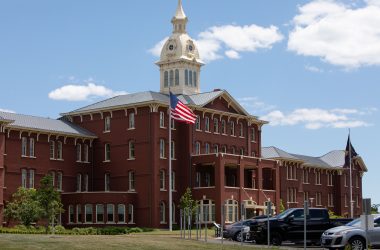Farmers in the Willamette Valley have been at odds for more than three decades over the risks of planting more canola, and whether the potential for pesticide drift and cross-pollination with cabbage, broccoli and other members of canola’s brassica family could threaten the purity and economic value of the valley’s prized seed crops.
The debate heated up in the late ’90s, when genetically modified, or GMO, canola seeds were approved by the federal Food and Drug Administration and soon dominated the U.S. market.
Now, farmers eager to grow more canola in the Willamette Valley say they’ve outgrown the 500 restricted acres between Multnomah and Lane counties that the Oregon Department of Agriculture has allowed since 2011. They want more acreage and are averse to new restrictions on growing GMO canola. The seeds are used to make cooking oil, margarine, animal feeds and mixed fuels.
Their neighbors, participating in the valley’s $15 million a year specialty brassica seed industry, say the risks of canola cross-pollinating with their plants, along with the risk of pests and herbicide drift that can hurt some crops and compromise organic ones.
Those on each side of the debate shared testimony, science and best and worst case scenarios in Salem this week at a meeting of the House Committee On Agriculture, Land Use, Natural Resources and Water.
They were debating a proposal to quintuple canola production in the valley – House Bill 4059 – with some guardrails for the genetically modified seeds that even lawmakers are at odds over.
Lauren Kuenzi, a lobbyist for the nonprofit farm industry and advocacy group Oregon Farm Bureau, told the committee that allowing more canola farming in the valley while more strictly regulating where GMO canola can grow would be divisive and would put the Legislature in charge of determining who wins based on political pressure. Eric Setniker, president of the Universal Seed Company in Oregon and Washington, said unintentional cross-pollination of GMO canola with non-GMO brassica seeds could destroy his company.
“The seed that we produce is DNA tested for (GMO) genes and if found, the crop is 100% rejected,” he said.
The committee will vote on the proposal Thursday.
GMO seeds
The thrust of the canola bill, sponsored by state Rep. Ken Helm, D-Beaverton, would allow the current canola production in the valley to expand from the current 500-acre zone to 2,500 acres, with some new restrictions on where GMO varieties could be planted.
Many of the valley’s heritage seed growers are opposed to allowing more canola, and they attempted during last year’s Legislative session to ban it permanently. Helm convened a workgroup following the session to find a middle ground that would allow canola growers more acreage and ease the concerns of those worried about the cross-pollination of GMO seeds.
While canola farming has recently taken off in Northwest states, tripling in acreage in the last eight years, the restrictions in the Willamette Valley are unusual. Less than one half of one percent of the 1.7 million acres of farmland in the valley is used to grow canola.
About 95% of the canola grown in the U.S. today is genetically modified, meaning scientists have isolated, transferred and modified the genes of the organism, mostly to resist certain herbicides and pesticides. Canola is one of only 11 genetically modified crops that the federal Food and Drug Administration has permitted to be grown in the U.S.
The Canola plants are often sprayed with popular herbicides like Roundup that contain the chemical glyphosate, which can threaten the health and survival of other brassicas that are not resistant to the chemical. Studies also show long-term exposure to glyphosate can cause cancer. Agricultural workers have filed more than 165,000 personal injury claims against Bayer, which now makes Roundup after acquiring the rights from the agrochemical giant Monsanto in 2018. Bayer has paid out nearly $11 billion in settlements in cancer cases potentially linked to glyphosate exposure in fields.
Oregon’s agriculture department currently does not regulate the GMO status of canola but does require it be planted at least 3 miles from other crops in the brassica family.
Lawmakers are split over the buffer zone.
Helm, chair of the agriculture committee, would like to set limits on the expansion of canola production depending on the type of seeds planted. He wants growers in Oregon to get a permit to grow canola and have the agriculture department continue to enforce the 3-mile buffer zone for non-GMO canola and enforce a new 6-mile buffer zone between GMO canola plants and other brassica plants.
Canola farmer and Rep. Anna Scharf, R-Amity, opposes a GMO-specific buffer zone. At the meeting Tuesday, Sharf said restricting GMO canola growth was not based on science, but “a desire to control markets favoring one industry over another.”
Sharf has long contended that a handful of specialty seed growers in the valley are leading the opposition to canola expansion.
A 2021 study published by Korean scientists in the international journal Biology cataloged global incidents of unintentional cross-pollination of GMO canola with other plants. Among the 23 incidents listed in a table from the study, two were in the U.S. – in North Dakota and California.
“We’re not in this table yet. I don’t want us to be,” Kenny Smith, vice president of the Willamette Valley Specialty Seed Association, told lawmakers.
Oregon Capital Chronicle is part of States Newsroom, a network of news bureaus supported by grants and a coalition of donors as a 501c(3) public charity. Oregon Capital Chronicle maintains editorial independence. Contact Editor Lynne Terry for questions: [email protected]. Follow Oregon Capital Chronicle on Facebook and Twitter.
STORY TIP OR IDEA? Send an email to Salem Reporter’s news team: [email protected].

Alex Baumhardt has been a national radio producer focusing on education for American Public Media since 2017. She has reported from the Arctic to the Antarctic for national and international media, and from Minnesota and Oregon for The Washington Post. She previously worked in Iceland and Qatar and was a Fulbright scholar in Spain where she earned a master's degree in digital media. She's been a kayaking guide in Alaska, farmed on four continents and worked the night shift at several bakeries to support her reporting along the way.









